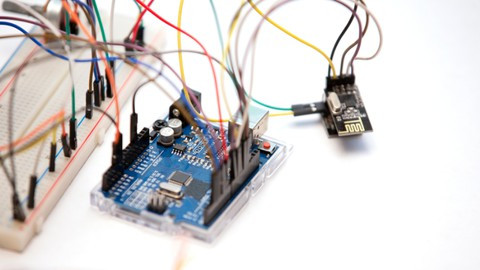Inserting a node at the beginning of a linked list is one of the simplest and most commonly used operations in linked list management. This operation allows you to quickly add a new element at the front without traversing the entire list. Inserting at the beginning is particularly useful when implementing stacks or when frequent additions are required at the start.

with hands-on learning.
get the skills and confidence to land your next move.
Understanding the Problem
When inserting a node at the beginning, the new node must point to the current head of the list, and then the head pointer must be updated to the new node. Careful handling of pointers is crucial to avoid losing the existing nodes. Dynamic memory allocation is also required to create the new node without affecting other nodes.
Program: Insert at the Beginning
Inserting at the beginning is one of the simplest and most commonly used operations in a linked list. This program demonstrates how to create a new node, link it to the current head, and update the head pointer. It shows how dynamic memory allocation and pointer management work in practice.
#include <stdio.h>
#include <stdlib.h>
typedef struct Node {
int data;
struct Node *next;
} Node;
Node *head = NULL;
void insertAtBeginning(int value) {
Node *newNode = (Node*)malloc(sizeof(Node));
newNode->data = value;
newNode->next = head; // Point new node to current head
head = newNode; // Update head to new node
printf("%d inserted at the beginning of the list\n", value);
}
void display() {
if (!head) {
printf("Linked List is empty\n");
return;
}
Node *temp = head;
printf("Linked List: ");
while (temp) {
printf("%d ", temp->data);
temp = temp->next;
}
printf("\n");
}
int main() {
insertAtBeginning(10);
insertAtBeginning(20);
insertAtBeginning(30);
display();
return 0;
}In this program, the insertAtBeginning function creates a new node and sets its next pointer to the current head of the list. Then the head pointer is updated to the new node. The display function traverses the list from head to NULL and prints all node values.
FAQs
Q1: What is the time complexity of inserting at the beginning?
O(1), because it does not require traversing the list.
Q2: Can this method handle an empty list?
Yes, if the list is empty, the new node simply becomes the head.
Q3: How is memory managed for the new node?
Memory is dynamically allocated using malloc, and it should be freed when the node is deleted.
Q4: Can multiple nodes be inserted at the beginning consecutively?
Yes, each new node becomes the new head, pushing previous nodes down the list.
Conclusion
Inserting a node at the beginning of a linked list is a fundamental operation that is simple, efficient, and widely used in data structures. By carefully managing pointers and dynamic memory, this operation allows fast additions to the front of the list, forming the basis for other structures like stacks.
References & Additional Resources
The following books and online resources provide both theoretical foundations and practical examples to help you understand linked list operations and dynamic memory allocation in C.
- Kernighan, B. W., & Ritchie, D. M. (1988). The C Programming Language (2nd Edition). Prentice Hall – Classic reference on C fundamentals, including pointers and memory, critical for linked list operations.
- Thareja, R. (2011). Data Structures Using C. Oxford University Press – Detailed coverage of linked lists and dynamic memory allocation techniques.
- GeeksforGeeks: Linked List Insertions – Step-by-step examples of insertion operations in linked lists.
- Programiz: Singly Linked List Basics – Beginner-friendly guide covering fundamental concepts and operations.
- Tutorialspoint: What is Dynamic Memory Allocation in C? – Explanation of
malloc(),calloc(),realloc(), andfree()functions for memory management in linked lists. - C Standard Library Documentation – Memory Management – Official reference for memory allocation and deallocation functions in C.







